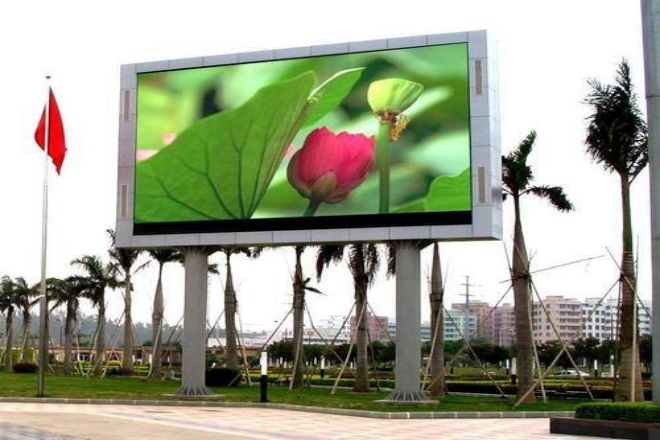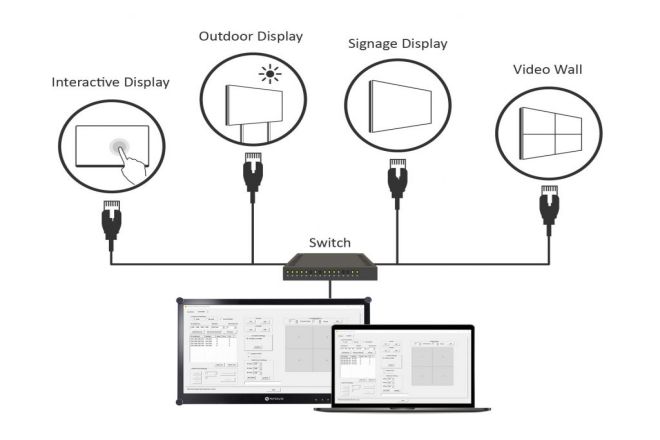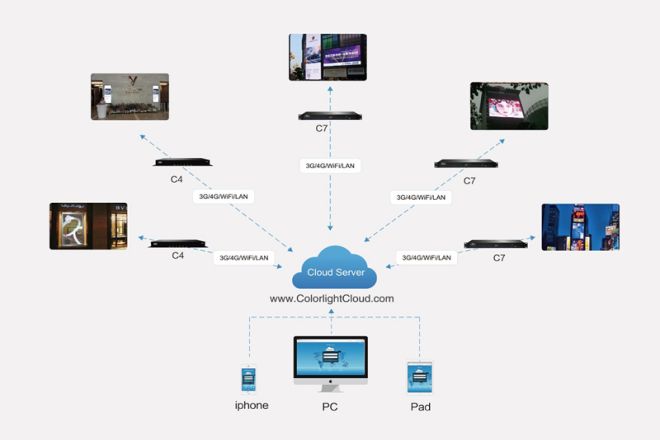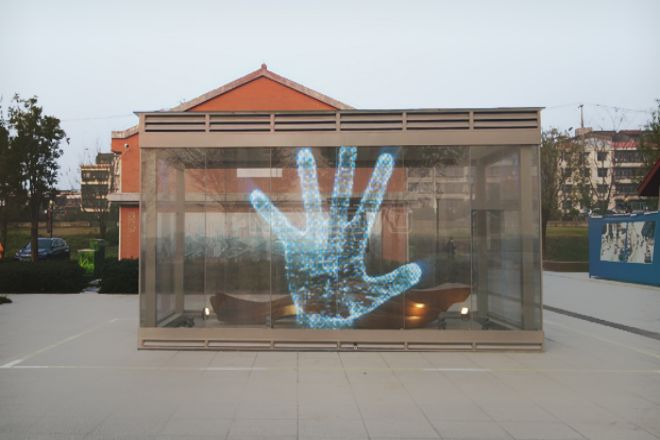Introduction

When it comes to the control options for LED displays, LAN and Internet control have their own advantages. Do you want to know which one is more suitable for you? Don’t worry, this article will help you quickly understand the advantages of both. I believe you will gain something after reading this article.
1. What is LAN control?

In simple terms, LAN is controlled through network cables. Imagine having a home theater system that includes TVs, speakers, and various players. They are all connected together through the same network cable to form an independent “small circle” so that you can use a remote control to control all devices.
LAN control of LED display screens is an upgraded version of this principle, but this time, it controls not only home theater equipment but also LED display screens.
The LED display screen and the control computer (like the remote control) are connected in the same “small circle”, which is the LAN. LAN is like your backyard, only you and your family (devices) can come in, outsiders (other people on the Internet) can’t come in unless you invite them (such as through VPN and other technologies).
Advantages Analysis:
1). High security:
Just like you put your valuables at home instead of on the street, LAN control puts data and control signals at “home,” that is, in the LAN. In this way, only devices in the LAN can see and access the data, greatly reducing the risk of data being stolen by outsiders. On the Internet, just like on the street, anyone can see your things, so the security is much lower.
2). Good real-time performance:
In the LAN, data and control signals are like children running around in your house; they run very fast, and there is almost no need to wait. So, when you want to change the content on the LED display, these changes will be reflected immediately, with almost no delay.
On the Internet, data is like a messenger who has to cross thousands of mountains and rivers to reach its destination and may encounter various obstacles, resulting in delays.
Low cost: If all the devices in your home are connected through a LAN, you don’t need to pay extra “tolls” (Internet access fees and data transmission fees) for each device. Similarly, LAN control of LED display screens does not require these additional costs because it only transmits data “at home” and does not need to use the “road” outside (Internet).
Easy to manage: Imagine if your remote control can control all the appliances in your home instead of requiring a separate remote control for each appliance.
2. Wouldn't it be very convenient?

LAN control of LED display screens is the same reason. In a LAN, you can manage multiple displays through a control computer, just as easily as controlling multiple devices with a remote control. You can update the content of multiple displays at the same time or set and adjust them uniformly.
What is Internet control? Internet control of LED display screens refers to the monitoring, management, and control of remote LED display screens through the global communication platform of the network (especially the Internet). Users can access the IP address of the LED display screen through terminal devices such as computers, mobile phones, or tablets, using the Internet, just like operating smart devices at home, to update the content, adjust the brightness, switch control, etc. of the LED display screen.
This control method greatly improves the flexibility and efficiency of management, making the application scenarios of LED display screens more extensive and convenient.
1). Advantages
- Remote monitoring and management:
Users can view and control the status of LED display screens through the Internet anytime and anywhere without having to go to the site in person. This is particularly important for the management of a large number of LED display screens distributed in different locations, such as city billboards, sports event scoreboards, etc.
- Real-time data transmission:
Internet control supports real-time data transmission, and users can instantly understand the operating status, playback content, and other information of the LED display screen and quickly adjust it as needed.
This is crucial for application scenarios that require instant response (such as news rolling broadcasts, emergency notifications, etc.).
- Resource sharing:
Through the Internet, multiple LED display screens can share and update content and data synchronously. This helps to improve the efficiency of information dissemination and reduce operating costs. It is particularly suitable for chain enterprises, government agencies, and other occasions that require unified management.
- The high degree of automation:
Internet control supports automated operations, such as timed power on and off, automatic playlists, etc. This reduces manual intervention, improves the stability and reliability of the system, and also reduces management costs.
- Cross-regionality:
No matter where in the world the LED display is located, as long as there is an Internet connection, users can control and manage it. This cross-regional control capability makes global collaboration and remote management possible.
2). Disadvantages
- Security risks:
Internet control is at risk of being hacked, which may lead to security issues such as data leakage and illegal control of equipment. In order to ensure system security, strict security measures such as data encryption, firewalls, access control, etc. need to be taken.
- Dependence on the network environment:
The stability and reliability of Internet control are greatly affected by the network environment. Network failures, delays, or interruptions may lead to control failures or data loss, affecting the normal operation of the LED display.
- High cost:
Compared with LAN control, Internet control requires additional Internet access fees and data transmission fees. In addition, in order to ensure the safety and stable operation of the system, it may be necessary to purchase professional network security equipment and software, which increases the overall cost.
- High technical requirements:
Internet control requires high technical support and expertise, including network configuration, security settings, remote control protocols, etc. This places high demands on managers or technicians, who need to have certain professional skills and experience.
3. Comparative analysis of two control methods for LED displays

In the application field of LED display screens, the choice of control method is directly related to the system’s security, real-time performance, stability, cost-effectiveness, remote control capability, cross-regional coverage, and intelligent management level.
1). Security
- LAN control:
Due to its closed nature, data and control signals are transmitted in the internal network, which effectively reduces the risk of external attacks. Physical and logical isolation provides a high level of security for the system.
- Internet control:
Internet control faces the challenge of an open network environment. Data and control signals need to be transmitted through a public network, which is vulnerable to network attacks and data leaks.
Therefore, more complex and stringent security measures, such as data encryption, firewalls, VPN tunnels, etc., need to be taken to ensure the security of data transmission.
2). Real-time performance
- LAN control:
The data transmission speed in the LAN is fast, and the latency is low, which can ensure a high level of real-time performance. This is particularly important for LED display screen application scenarios that require instant response.
- Internet control:
Although Internet control can also achieve real-time data transmission, its real-time performance is greatly affected by fluctuations in the network environment. For example, network congestion, high latency, and other issues may lead to a decrease in real-time performance.
3). Stability
- LAN control:
The devices in the LAN are connected stably, are less affected by external interference, and have high system stability, which is conducive to ensuring the continuous and stable operation of the LED display.
- Internet control:
The stability of Internet control is affected by many factors, such as network failures, server performance fluctuations, etc., which may cause control interruption or instability, affecting the normal display of the LED display.
4). Cost
- LAN control:
The initial investment is relatively low, and there is no need to pay additional Internet access fees and data transmission fees, and the equipment cost is relatively low.
- Internet control:
Additional Internet access fees and data transmission fees need to be paid, and higher-level servers and network security equipment may need to be purchased, and the overall cost is high.
5). Remote control capability
- LAN control:
The remote control capability is relatively limited, and it can usually only be controlled within the LAN, which limits its application in remote management.
- Internet control:
With powerful remote control capabilities, as long as the device is connected to the Internet, it can be remotely controlled and managed globally, greatly improving the flexibility and convenience of management.
6). Cross-regional coverage
- LAN control:
The coverage is limited to the LAN, and it is impossible to achieve cross-regional device connection and management.
- Internet control:
With cross-regional coverage, LED display devices around the world can be connected to achieve unified management and control.
7). Intelligent management
- LAN control and Internet control:
Both can achieve a certain degree of intelligent management, such as automatic control, data analysis, etc. However, Internet control has greater potential and advantages in intelligent management due to its wide connection capabilities and powerful data processing capabilities.
7). Applicable scenarios
- LAN control:
Suitable for applications in small, fixed places, such as offices, schools, hospitals, etc. These places have high requirements for security, real-time, and stability, and the equipment is relatively concentrated. LAN control can meet their management needs.
- Internet control:
More suitable for large, decentralized, or remotely managed projects, such as chain enterprises, remote monitoring, intelligent manufacturing, etc. These projects require equipment connection and management across multiple geographical regions, and have high requirements for remote control capabilities and cross-regional coverage, making Internet control an ideal choice.
Conclusion
In summary, LAN control and Internet control have their own advantages, and they play an irreplaceable role in different application scenarios. Whether it is a small-scale application that pursues high security and stability or a large-scale project that requires remote control and cross-regional coverage, we can flexibly choose or combine these two control methods according to actual needs.
Finally, if you want to know more about LED display screens, please get in touch with us.
